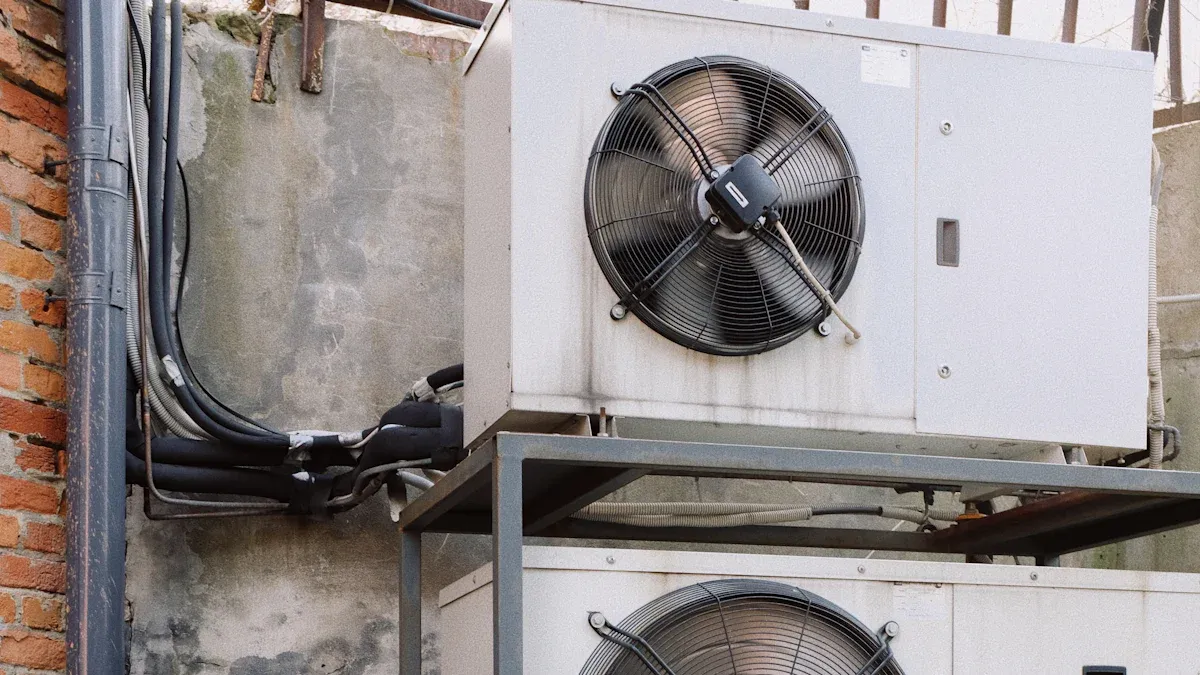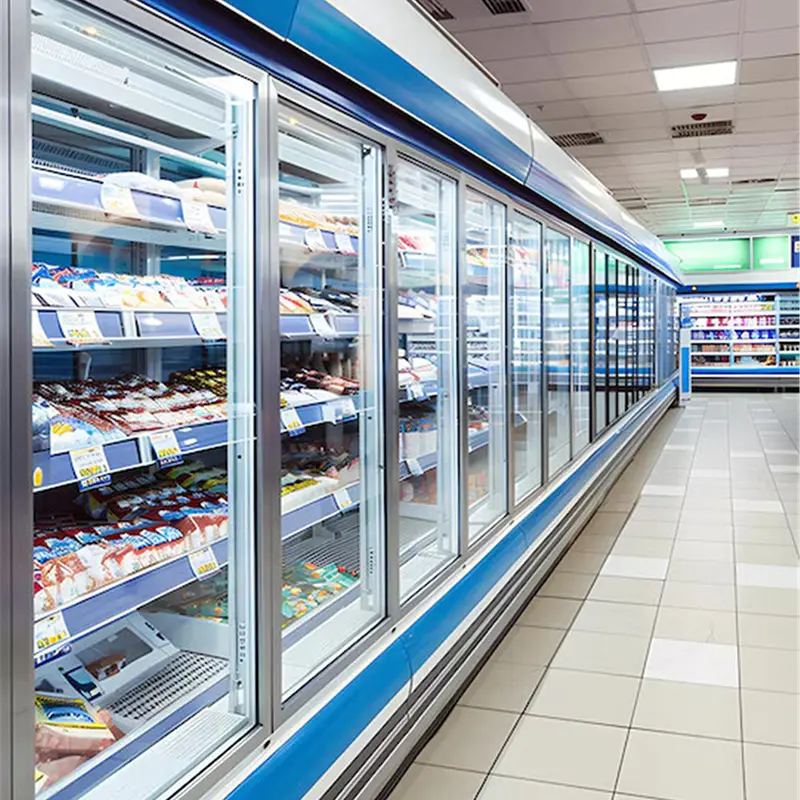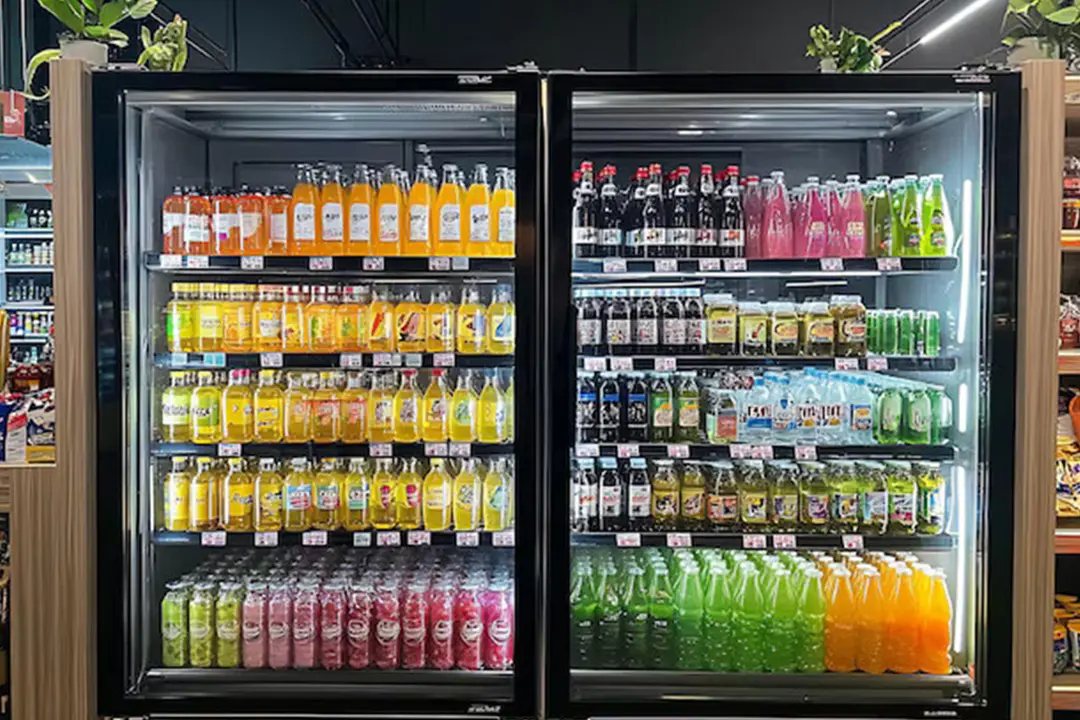How to Evaluate Refrigeration Parts Suppliers: 6 Key Metrics

Selecting the right refrigeration parts supplier is crucial for ensuring operational efficiency and achieving business success. To make an informed decision, it is essential to evaluate refrigeration parts suppliers' key metrics, such as on-time delivery, order accuracy, and lead time. These performance indicators are vital in identifying suppliers that align with your operational objectives and maintain high standards of quality and reliability.
Ningbo Senjun New Materials Co., Ltd. (senjun) stands out as a supplier dedicated to innovation and excellence. With expertise in manufacturing products like the wire tube condenser, senjun serves a wide range of industries, including refrigeration, medical ultra-low temperature solutions, and more. Their commitment to quality and advanced solutions makes them a trusted partner for businesses around the globe.
Key Takeaways
- Check supplier quality by looking for certifications like ISO or RoHS. Good parts improve systems and lower the chance of problems.
- Make sure prices are clear by comparing quotes. Avoid hidden costs. Clear pricing helps you stick to your budget and trust the supplier.
- Look at delivery times and stock availability to avoid delays. Reliable suppliers deliver on time and have parts ready when needed.
- Test customer service by seeing how fast and helpful they are. Good support keeps things running and builds strong partnerships.
- Read online reviews and ask for references to check reputation. A good reputation shows the supplier is trustworthy and dependable.
Quality of Parts: A Key Metric to Evaluate Refrigeration Parts Suppliers
Importance of High-Quality Parts
How quality impacts refrigeration system performance and longevity
High-quality parts play a critical role in ensuring the efficiency and durability of refrigeration systems. Industry data reveals that compressor failures account for nearly 30% of all refrigeration breakdowns. Using low-quality components can reduce efficiency by up to 20% and increase the likelihood of breakdowns by 40%. On the other hand, investing in premium OEM or aftermarket parts can extend the lifespan of refrigeration components by up to 30%. This not only enhances system performance but also reduces operational costs over time.
Risks of using substandard parts
Substandard parts pose significant risks to refrigeration systems. They often fail to meet performance standards, leading to frequent malfunctions and costly repairs. Additionally, low-quality parts may not comply with international shipping regulations, resulting in delays and potential cargo losses. For businesses, these risks can disrupt operations and erode customer trust.
How to Evaluate Quality
Checking certifications and industry standards compliance
When evaluating refrigeration parts suppliers, certifications and compliance with industry standards are essential indicators of quality. Look for suppliers that adhere to certifications like RoHS and ISO, which ensure safety and environmental standards. These certifications validate the reliability and performance of the parts.
Reviewing customer feedback and testimonials
Customer reviews and testimonials provide valuable insights into a supplier's product quality. Positive feedback from other businesses highlights the supplier's ability to deliver durable and efficient parts. Additionally, case studies can showcase the supplier's expertise in meeting specific industry needs.
senjun's Commitment to Quality
Overview of senjun's research and development in wire tube condensers and copper aluminum fin heat exchangers
Ningbo Senjun New Materials Co., Ltd. exemplifies a commitment to quality through its advanced research and development. The company specializes in producing wire tube condensers and copper aluminum fin heat exchangers, catering to diverse applications such as refrigerators, freezers, and medical ultra-low temperature refrigerators. Their focus on innovation ensures that their products meet the highest performance standards.
Examples of senjun's products for refrigerators, freezers, and medical ultra-low temperature refrigerators
Senjun's product portfolio includes solutions tailored for various industries. Their wire tube condensers and heat exchangers are designed for optimal efficiency and durability. These products are widely used in refrigerators, freezers, and specialized equipment like medical ultra-low temperature refrigerators, showcasing their versatility and technical expertise.
Pricing and Cost Transparency: Evaluate Refrigeration Parts Suppliers Key Metrics
Why Pricing Matters
Balancing cost-effectiveness with quality
Pricing plays a pivotal role in supplier evaluation. I always emphasize the importance of balancing cost-effectiveness with quality. Opting for the cheapest option often leads to compromises in product performance and durability. On the other hand, overpaying for parts can strain budgets unnecessarily. Striking the right balance ensures that refrigeration systems operate efficiently without inflating operational costs.
Avoiding hidden fees or unexpected costs
Transparent pricing is equally critical. Hidden fees or unexpected costs can disrupt financial planning and erode trust in supplier relationships. For instance, suppliers with unclear pricing structures may include additional charges for shipping or handling, which can inflate the total cost. I recommend working with suppliers who provide clear, upfront pricing to avoid such surprises.
How to Assess Pricing
Comparing quotes from multiple suppliers
One effective way to evaluate pricing is by comparing quotes from multiple suppliers. This approach helps benchmark performance and identify partners offering the best value. For example:
- Should-cost analysis allows procurement teams to estimate fair pricing based on industry benchmarks.
- It highlights cost-saving opportunities and inefficiencies, fostering collaboration with suppliers to reduce overhead costs.
- Comparing quotes also enhances negotiation leverage, ensuring alignment with reasonable cost expectations.
Evaluating long-term cost savings through warranties or bulk discounts
Long-term cost savings should also factor into pricing evaluations. Suppliers offering warranties or bulk discounts often provide better value over time. For instance, competitive pricing combined with flexible payment terms can significantly reduce the Total Cost of Ownership (TCO). Here's a quick comparison of key financial metrics to consider:
| Factor | Description |
|---|---|
| Competitive Pricing | Comparison of supplier prices against competitors and availability of volume discounts. |
| Fair Pricing Structure | Assessment of whether the pricing is reasonable and if there are any hidden fees involved. |
| Value Alignment | Evaluation of how pricing correlates with the value delivered by the supplier. |
By focusing on these aspects, I ensure that suppliers meet both immediate and long-term financial goals. This method aligns with the broader framework to evaluate refrigeration parts suppliers key metrics effectively.
Availability and Lead Times: A Critical Metric for Supplier Evaluation

Importance of Reliable Availability
Impact of delays on business operations
Reliable availability of refrigeration parts is essential for maintaining smooth business operations. Delays in receiving critical components can disrupt production schedules, leading to downtime and financial losses. For instance, high lead time variability often results in unpredictable delivery schedules, which can derail operational planning.
| Metric | Description | Impact on Supply Chain |
|---|---|---|
| Lead Time Variability | Measures the consistency of lead times provided by suppliers. | High variability can disrupt production schedules. |
| On-time and In-full (OTIF) | Evaluates the percentage of orders delivered on time and in full. | Poor performance can lead to stockouts and delays. |
| Aggregate Supplier Availability | Involves gathering data on raw materials, production capacity, and lead times. | Essential for monitoring supplier quality metrics. |
Ensuring parts are available during emergencies
Emergencies demand immediate access to replacement parts. Suppliers with robust inventory management systems ensure parts are readily available, minimizing downtime. I always recommend working with suppliers who prioritize stock availability and maintain transparent communication about inventory levels.
How to Measure Lead Times
Reviewing supplier delivery records
Analyzing delivery records provides valuable insights into a supplier's reliability. Metrics like on-time delivery rates and OTIF performance highlight their ability to meet deadlines consistently. Suppliers with low on-time delivery rates often face capacity constraints, which can hinder their ability to fulfill orders promptly.
| Metric | Evidence |
|---|---|
| On-Time Delivery Rates | Consistently low on-time delivery rates may indicate issues with supplier reliability or capacity constraints. |
| OTIF Performance | OTIF performance evaluates the percentage of orders delivered on time and in full, considering both delivery timeliness and order completeness. |
Asking about inventory management practices
Understanding a supplier's inventory management practices is equally important. Suppliers who invest in advanced systems can reduce lead time variability and improve delivery consistency. High variability in lead times often signals inefficiencies in their supply chain processes, which can impact your operations.
- Lead time variability indicates the consistency of delivery schedules.
- High variability suggests potential reliability issues with suppliers.
Measuring lead times also helps businesses plan inventory needs effectively, enhancing supply chain efficiency and customer satisfaction.
senjun's Delivery Efficiency
senjun's ability to maintain consistent stock levels and timely delivery
Ningbo Senjun New Materials Co., Ltd. exemplifies delivery efficiency through its advanced production facilities. These facilities enable senjun to fulfill bulk orders while maintaining strict quality standards. Their lead times for wire tube condensers typically range from 1 to 4 weeks, with most orders completed within the same month. This operational efficiency ensures that senjun consistently delivers on time, even for large-scale orders. Businesses can rely on senjun to meet their needs without compromising on quality or timeliness.
Customer Service and Support: A Key Metric to Evaluate Refrigeration Parts Suppliers

Why Customer Support is Critical
Resolving issues quickly to minimize downtime
Customer support plays a pivotal role in minimizing downtime. When refrigeration systems face unexpected issues, quick resolutions are essential to avoid disruptions. I have observed that suppliers with strong customer support teams can address problems efficiently, ensuring operations resume without significant delays. Metrics like First Reply Time (FRT) and resolution rates highlight the importance of responsiveness. For example:
| Evidence | Description |
|---|---|
| Strong Customer Support | Effective support helps identify and resolve system issues, reducing downtime. |
| Zero Downtime Impact | Reliable support ensures uninterrupted operations, enhancing productivity. |
Suppliers who prioritize customer service often achieve higher resolution rates, which directly correlates with reduced downtime and improved operational efficiency.
Building a strong supplier relationship
Customer service also fosters long-term supplier relationships. A supplier's willingness to assist during critical moments builds trust and reliability. I always recommend choosing suppliers who value communication and prioritize customer satisfaction. Surveys consistently show that responsiveness and issue resolution are key factors in evaluating supplier performance. These elements not only strengthen partnerships but also ensure smoother collaboration over time.
How to Evaluate Customer Service
Testing responsiveness through inquiries
Evaluating a supplier's responsiveness is straightforward. I suggest sending inquiries to test their response time and quality. Suppliers with quick and detailed replies demonstrate their commitment to customer support. Metrics like First Reply Time and customer satisfaction scores provide valuable insights into their efficiency. Rising resolution rates further indicate their ability to handle issues effectively.
Checking for value-added services like technical support
Value-added services, such as technical support, enhance the overall customer experience. Suppliers offering these services go beyond basic transactions, providing expert guidance and troubleshooting assistance. I recommend assessing whether a supplier includes these services as part of their offering. Qualitative feedback mechanisms, such as customer testimonials, can help determine the effectiveness of their support.
Surveys reveal that customer service is a critical factor in supplier evaluation. Gathering feedback from stakeholders provides a comprehensive view of a supplier's performance, including their responsiveness and support quality.
By focusing on these aspects, I ensure that customer service remains a top priority when I evaluate refrigeration parts suppliers key metrics.
Reputation and Reliability: Evaluate Refrigeration Parts Suppliers Key Metrics
Importance of a Strong Reputation
How reputation reflects supplier trustworthiness
A supplier's reputation serves as a direct reflection of their trustworthiness. When I evaluate refrigeration parts suppliers, I always consider their certifications and track record. Certifications like ISO 9001 or RoHS compliance demonstrate adherence to industry standards, ensuring reliability. A proven history of consistently delivering high-quality products further solidifies a supplier's credibility.
| Evidence Type | Description |
|---|---|
| Certifications | Industry-standard certifications like ISO 9001 or RoHS compliance are essential for reliability. |
| Track Record | A supplier's proven history of delivering high-quality products consistently indicates reliability. |
Avoiding risks associated with unreliable suppliers
Working with unreliable suppliers introduces significant risks. I have seen how poor supplier performance can disrupt operations and damage brand reputation. A strong supplier reputation minimizes these risks by ensuring ethical practices and supply chain resilience. Reliable suppliers adapt to unexpected changes, safeguarding business continuity.
- A strong supplier reputation helps protect brand reputation by ensuring suppliers meet ethical standards.
- Due diligence in supplier selection minimizes risks associated with unethical practices.
- Reliable suppliers contribute to enhanced supply chain resilience, allowing businesses to adapt to unexpected changes.
How to Research Reputation
Reading online reviews and case studies
Online reviews and case studies provide valuable insights into a supplier's reputation. I recommend using independent verification methods, such as third-party audit reports or industry databases, to confirm supplier data. Cross-departmental collaboration also helps gather diverse perspectives on supplier performance. Software tools can streamline due diligence and monitor supplier reliability over time.
| Method | Description |
|---|---|
| Independent verification | Use third-party audit reports, credit bureaus, and industry databases to confirm supplier data. |
| Cross-departmental collaboration | Engage different departments to gather diverse insights on supplier performance and reliability. |
| Software solutions | Implement software tools for comprehensive supplier due diligence and ongoing monitoring. |
Asking for references from other businesses
Referrals from peers often lead to reliable suppliers. For example, senjun has earned a strong reputation for quality and transparency, making them a trusted choice for many businesses. Suppliers who openly share their quality control processes build trust and demonstrate reliability. I always prioritize suppliers who maintain transparency and provide references from satisfied clients.
Tip: Always verify supplier claims through multiple sources to ensure accuracy and reliability.
Compliance with Industry Standards: A Key Metric for Supplier Evaluation
Why Compliance Matters
Ensuring safety and regulatory adherence
Compliance with industry standards ensures safety and regulatory adherence, which is critical for maintaining operational integrity. Adhering to established guidelines minimizes risks and promotes efficiency through standardized procedures. For example:
- Compliance with regulations like GDPR and HIPAA enhances public trust and brand reputation.
- Following environmental standards reduces legal liabilities and financial penalties.
By meeting these requirements, businesses can operate safely while building credibility in their respective industries.
Avoiding legal or operational risks
Non-compliance can lead to severe consequences, including fines, reputational damage, and operational disruptions. A lack of adherence to safety and regulatory standards often results in halted operations or legal disputes. Consider the following impacts:
| Consequence of Non-Compliance | Description |
|---|---|
| Fines | Severe financial penalties imposed by regulators. |
| Reputational Damage | Loss of public trust and customer loyalty. |
| Operational Disruptions | Potential halting of business operations due to legal issues. |
| Financial Stability | Adherence to regulations prevents significant financial losses. |
Compliance not only mitigates these risks but also strengthens risk management strategies, ensuring long-term stability.
How to Verify Compliance
Requesting documentation of certifications
Verifying supplier compliance begins with requesting documentation of certifications. Certifications like ISO 9001 demonstrate a supplier's commitment to quality management and operational consistency. Industry-specific certifications, such as GMP for pharmaceuticals or HACCP for food suppliers, validate adherence to health and safety regulations. These certifications provide assurance that suppliers meet the necessary standards.
Checking for adherence to environmental and safety standards
Suppliers must also comply with environmental and safety standards. Reviewing their adherence to these regulations ensures that their operations align with legal and ethical practices. For instance:
- Good Manufacturing Practices (GMP) ensure compliance with health regulations.
- Hazard Analysis and Critical Control Points (HACCP) confirm food safety standards.
- ISO certifications validate quality management and operational consistency.
These measures help businesses maintain a trustworthy supply chain while avoiding potential legal disputes.
senjun's Industry Compliance
senjun's adherence to environmental and safety standards in product development
Ningbo Senjun New Materials Co., Ltd. exemplifies industry compliance through its commitment to environmental and safety standards. The company integrates these principles into its product development processes, ensuring that its wire tube condensers and copper aluminum fin heat exchangers meet stringent regulatory requirements. By adhering to these standards, senjun not only delivers high-quality products but also reinforces its reputation as a reliable and ethical supplier.
Tip: Partnering with suppliers like senjun ensures compliance with industry standards, safeguarding your business from legal and operational risks.
Evaluating refrigeration parts suppliers requires a focus on six critical metrics: quality, pricing, availability, customer service, reputation, and compliance. These factors ensure operational efficiency and long-term success. I always look for suppliers who excel in areas like on-time delivery, flexibility, and responsiveness.
Ningbo Senjun New Materials Co., Ltd. exemplifies these qualities through its commitment to quality, reliability, and compliance. To streamline your evaluation process, create a checklist that includes:
- Quality and certifications
- Pricing transparency
- Delivery reliability
- Customer support responsiveness
- Reputation and flexibility
This approach simplifies decision-making and ensures you select the best supplier for your needs.
FAQ
What certifications should I look for in a refrigeration parts supplier?
Certifications like ISO 9001 and RoHS indicate a supplier’s commitment to quality and compliance. These certifications ensure the parts meet industry standards for safety, performance, and environmental responsibility.
How can I verify a supplier’s reputation?
I recommend reading online reviews, checking case studies, and asking for references from other businesses. These steps provide insights into the supplier’s reliability and customer satisfaction.
Why is lead time important when choosing a supplier?
Lead time impacts your operational efficiency. Delays in receiving parts can disrupt production schedules and cause downtime. Reliable suppliers maintain consistent lead times, ensuring smooth operations.
What role does customer service play in supplier evaluation?
Customer service ensures quick issue resolution and minimizes downtime. Suppliers offering responsive support and value-added services, like technical assistance, build stronger partnerships and enhance operational reliability.
How do I assess pricing transparency in suppliers?
Compare quotes from multiple suppliers and check for hidden fees. I also evaluate long-term savings through warranties or bulk discounts to ensure cost-effectiveness without compromising quality.


















